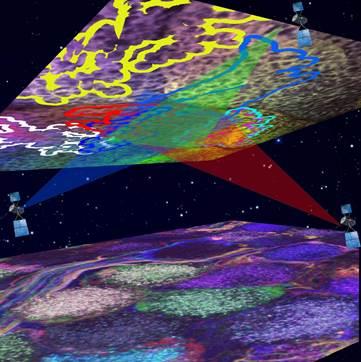New Mapping Technique Reveals Organization of Neuron Networks
By LabMedica International staff writers
Posted on 11 May 2015
A new technique permits neuroscience researchers to map the location of the axonal branches (arbors) of many individual neurons in the same tissue simultaneously.Posted on 11 May 2015
Investigators at The Hebrew University of Jerusalem (Israel) and Harvard University (Cambridge, MA, USA) have significantly improved the retrograde tracer method for identifying axon location.

Image: Researchers have developed a method to map the circuitry of the brain with a “neuronal positioning system” (NPS) (Photo courtesy of The Hebrew University of Jerusalem).
Retrograde tracing is a research method which is used in neuroscience to trace neural connections from their point of termination (the synapse) to their source (the cell body). The opposite technique is called anterograde tracing and is used to trace neural connections from their source to their point of termination (i.e. from cell body to synapse). Both the anterograde and retrograde tracing techniques are based on the visualization of the biological process of axonal transport. The anterograde and retrograde tracing techniques allow the detailed assessment of neuronal connections from a single population of neurons to their various targets throughout the nervous system. These techniques allow the "mapping" of connections between neurons in a particular structure (e.g., the eye) and the target neurons in the brain.
The investigators reported in the April 27, 2015, online edition of the journal Nature Methods that they had developed a method—a "neuronal positioning system" or NPS—to map the location of axonal arbors of many individual neurons simultaneously via the spectral properties of retrogradely transported dye-labeled vesicles.
To perform this technique, the investigators injected overlapping regions of an axon target area with three or more different colored retrograde tracers. The combinations and intensities of the colors in the individual vesicles depended on how far they were transported into the portion of the nerve cell that contained the nucleus but did not incorporate the dendrites or axon. The data obtained enabled the investigators to calculate the projection sites of each neuron's axon.
Contributing author Dr. Alex Binshtok, professor of medical neurobiology at The Hebrew University of Jerusalem, said, “The new method that we developed allows us to answer a "big question" in neuroscience about the organizational principles of neuronal circuits. Using the NPS technique that maps many axons in same tissue, we now can study what defines the routes along which the neurons will send their projections, as well as their targets. We can also learn how the wiring of the neuronal circuits changes during development and in a variety of pathological conditions. The answers to these questions will be the first step to comprehending how the information flows and is processed in the nervous system, and how changes in the neuronal organization affect neuronal function. I believe many scientists will find the NPS approach useful to help them answer the question of how the brain works.”
Related Links:
The Hebrew University of Jerusalem
Harvard University












